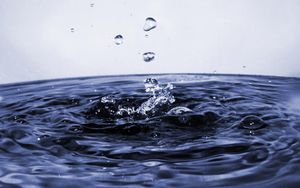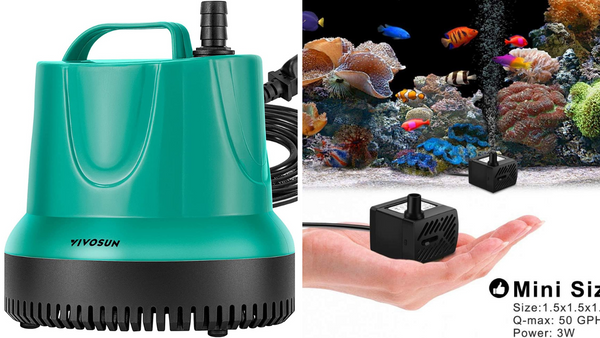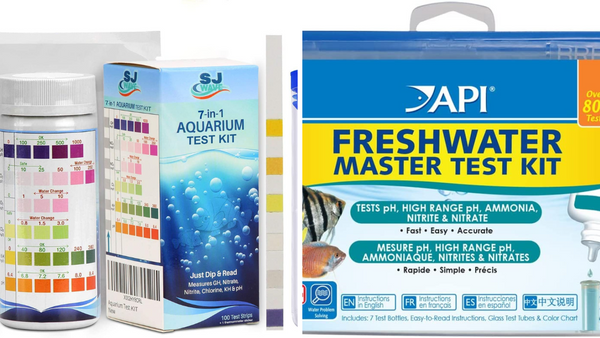Are you looking for the best aquarium plants to help oxygenate your tank? You’re in luck! We’ve done the research and found the top aquarium plants that will help keep your tank oxygenated and healthy.
Whether you’re a beginner or an experienced aquarist, these plants are a great addition to any tank. They’ll help oxygenate the water, maintain the pH balance, and provide a natural habitat for your fish. Plus, they’re beautiful and will add a touch of nature to your home.
We’ve compiled a list of the best aquarium plants for oxygenation, all of which are easy to maintain and require minimal care. From floating plants to low-light varieties, we’ve got you covered. We’ve also included tips on how to care for each type of plant, so you can be sure your tank is oxygenated and healthy.
If you’re ready to get oxygenated your aquarium, then this article is for you. Read on to learn about the best aquarium plants for oxygenation and how to care for them. Get ready to breathe new life into your aquarium!
How We Choose The Best Aquarium Plants For Oxygenation
Aquariums are a great way to bring life and color into your home, but many of them lack oxygenation. If you want to keep your fish happy and healthy, the best aquarium plants for oxygenation can make all the difference.
Finding the right aquatic plants for your tank can be tricky because there are so many different types and varieties available. How do you know which ones will give you the best value for your money?
Our team of experts has read thousands of reviews on Amazon to find the best aquarium plants for oxygenation. We've done all the hard work so that you can easily find and purchase the perfect aquatic plants for your tank. Get ready to see a healthier, happier fish family with better water quality!
We hope you find your next favorite thing from the list below! Each product was independently selected by our editors. Some may have been sent as samples for us to fiddle with, but all opinions in this article are our own. Oh, and FYI — LucksList may collect a share of sales or other compensation from the links on this page if you decide to buy something (that's how we stay in business). Reviews have been edited for length and clarity. Enjoy finding your next favorite thing!

3 Hornwort Bunch Plants
It Can Be Used For Several Purposes In A Freshwater Aquarium Or Pond
Why We Love It
Hornwort is an excellent choice for any freshwater aquarium or pond. This hardy plant is fast-growing and can quickly establish itself, providing benefits such as oxygenation and water purification. It does not require any special care and can grow in low light levels. Hornwort is great for controlling unwanted algae growth, as it absorbs excess nutrients in the water and keeps the environment clean.
What You Should Know
Hornwort is a hardy plant that can tolerate a wide range of water parameters, but it prefers a pH between 6.0 and 8.0, and a temperature range between 64 - 86°F (18 - 30°C). Hornwort can be easily propagated by cutting the stems into smaller pieces and planting them in the substrate. Additionally, it can grow quite tall, so it may need to be trimmed regularly to keep it from getting too large for the tank or pond. So why not add Hornwort to your aquarium or pond today? It’s a great choice for keeping your water clean, healthy and oxygenated.

Florida 10 Species Live Aquarium Plants Bundle
It Offers A Variety Of Plants That Are Well-Suited To A Freshwater Aquarium
Why We Love It:
The Florida 10 Species Live Aquarium Plants Bundle is the perfect choice for aquarium enthusiasts looking to create a natural-looking aquascape. It offers a variety of plants that are well-suited to a freshwater aquarium and can provide a diverse and natural-looking aquascape for your aquarium. Additionally, these plants are known for their adaptability to different water conditions and lighting levels, low maintenance, and cost-effectiveness. Plus, the live plants can help to create a more natural environment for fish and other aquatic life, and also help to maintain water quality.
What You Should Know:
When choosing live plants for an aquarium, it is important to remember that they will require proper planting and care in order to thrive. People should know that these plants will need to be trimmed and maintained to keep them healthy and prevent them from overgrowing in the aquarium. Additionally, people should be prepared to regularly prune and trim their plants as needed. Furthermore, people should also research how the plants in the bundle interact with one another as they may not all be compatible with each other. With proper care and maintenance, the Florida 10 Species Live Aquarium Plants Bundle can provide a beautiful, natural-looking aquascape for any aquarium.
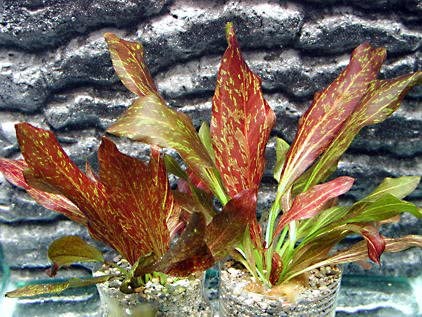
Potted Live Aquarium Plants
Suitable For A Wide Range Of Aquarium Setups, Including Freshwater And Saltwater Tanks.
Why We Love It:
Potted live aquarium plants are a great way to make your aquarium look beautiful and provide a natural habitat for fish and other aquatic animals. They can help to improve water quality by absorbing excess nutrients and releasing oxygen, they can provide a natural-looking environment for fish and other aquatic animals, and they can add visual interest to the aquarium. They are also suitable for a wide range of aquarium setups, including freshwater and saltwater.
What You Should Know:
When choosing potted live aquarium plants, it's important to consider the lighting requirements of the species. Most potted live aquarium plants require moderate to high lighting to thrive, so you may need to supplement with artificial lighting if your aquarium does not have sufficient lighting. Additionally, some potted live aquarium plants require additional fertilization to ensure healthy growth. Regular maintenance, such as pruning and trimming, is necessary to keep potted live aquarium plants healthy and looking their best. So why wait? Start adding potted live aquarium plants to your aquarium today!

Greenpro Hornwort Ceratophyllum Demersum Pond Oxygenating Live Aquarium Plants
Commonly Used In Both Freshwater And Saltwater Aquariums
Why We Love It:
Hornwort is an oxygenating plant that helps to improve water quality by absorbing excess nutrients and releasing oxygen, creating a healthier environment for fish and other aquatic animals. Plus, it is a fast-growing plant that can reach up to 3 feet in length and be used to create a natural-looking background or as a hiding place for fish and other aquatic animals. Its affordability and ease of propagation makes Hornwort a great choice for any aquarium!
What You Should Know:
Hornwort is a great choice for both freshwater and saltwater aquariums, but it does require moderate to high lighting to thrive. If your aquarium does not have sufficient lighting, you may need to supplement with artificial lighting. Additionally, Hornwort can grow very fast and its size and shape may need frequent pruning. Greenpro ships Hornwort in a wet condition, packaged with care, to ensure that it remains healthy and vibrant during transportation. So why wait? Get your own Hornwort today to improve water quality and create a natural-looking environment for your fish!
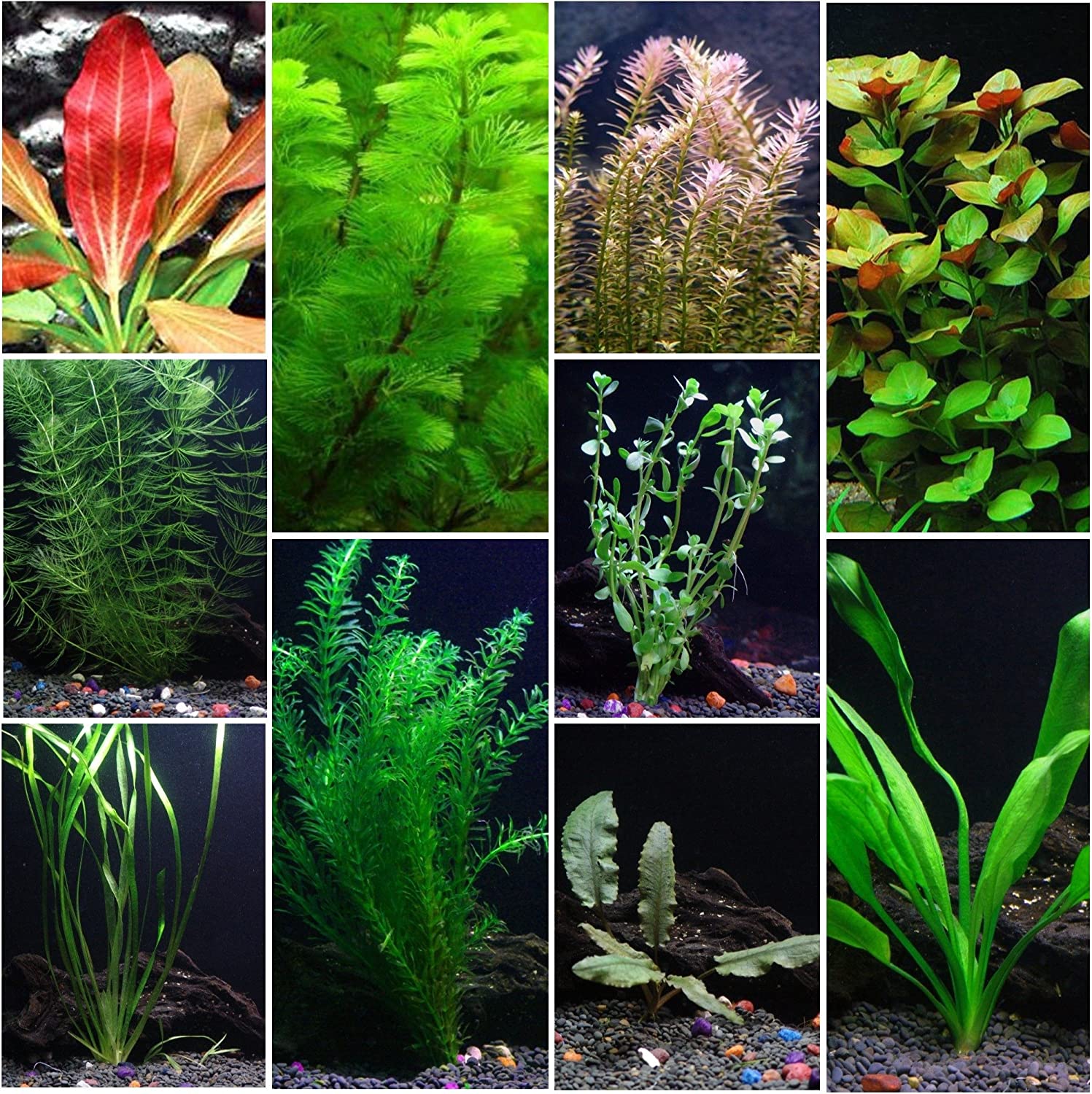
10 Species Live Aquarium Plants Package
Used For A Diverse And Natural-Looking Environment In Your Aquarium
Why We Love It:
The 10 Species Live Aquarium Plants Package is an ideal way to set up a diverse and natural-looking environment in your aquarium. This package contains 10 different species of plants, giving you a wide range of options to choose from. Different species of plants provide different benefits and visual appeal, allowing you to customize the look of your tank. Plus, buying a package of 10 different species of plants can be more cost-effective than buying each plant separately.
What You Should Know:
When setting up your aquarium with the 10 Species Live Aquarium Plants Package, it's important to research the specific needs of each plant. Different species of plants have different lighting requirements, so you need to make sure that your aquarium has adequate lighting for all of them. Additionally, some plants may require additional fertilization in order to thrive. It's important to research the specific needs of each plant and provide any necessary supplements. In addition, different species of plants have different requirements for water parameters such as pH, temperature, and hardness, so you need to ensure that these parameters are set correctly.
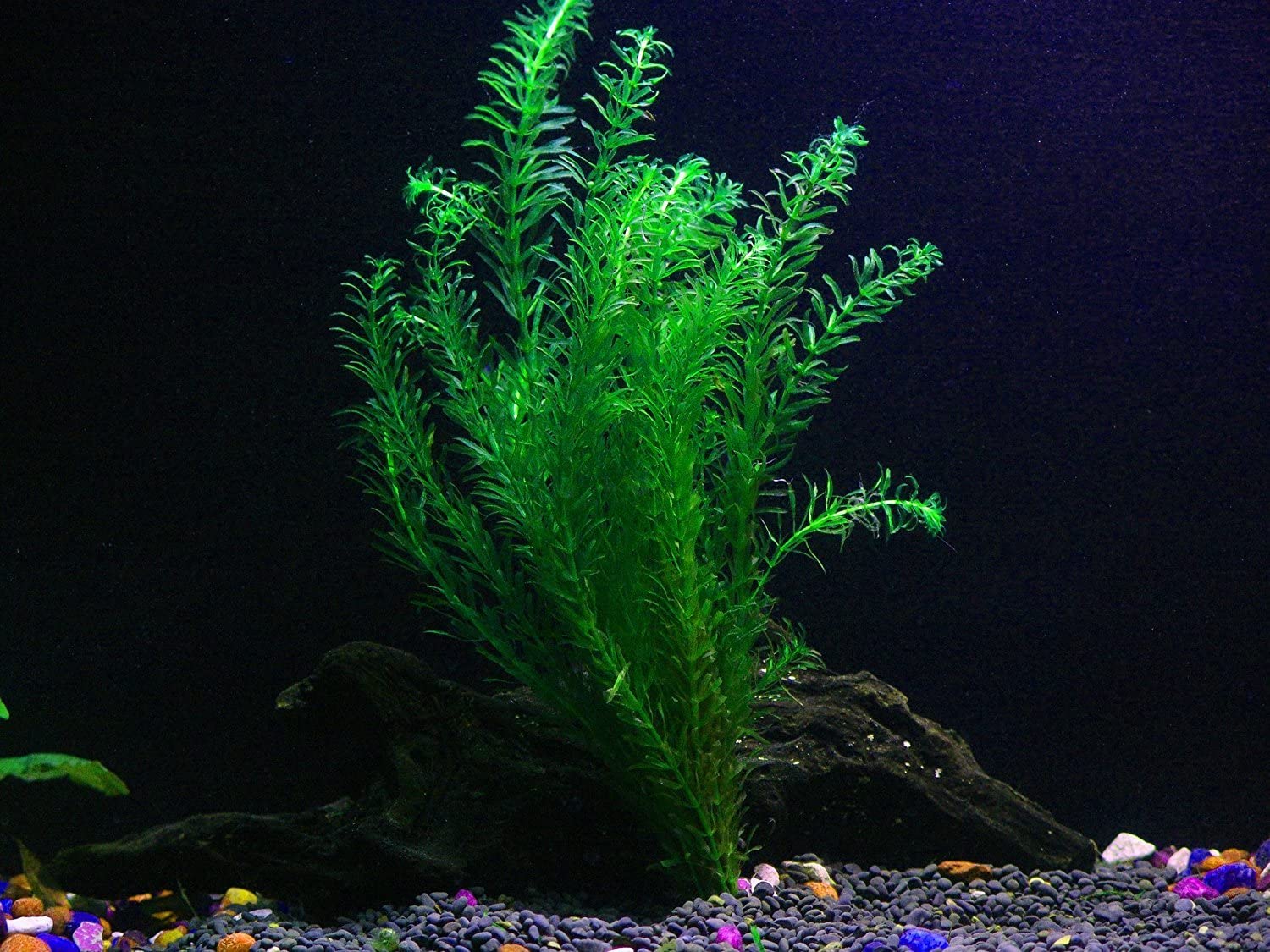
Pond Oxygenating Elodea Anacharis Bunch Plants
It Is Best For Oxygenation And Natural Filtration In The Pond.
Why We Love It:
Pond oxygenating Elodea Anacharis Bunch Plants are a great addition to any pond. They help to oxygenate and naturally filter the water, providing a healthy environment for fish and other aquatic animals. They grow rapidly and provide a natural food source for certain species of fish and aquatic animals.
What You Should Know:
Elodea Anacharis can thrive in a wide range of water conditions and temperatures, making them easy to care for. However, they may need to be pruned to prevent overgrowth in the pond. They are also beneficial in providing a natural food source for some species of fish and aquatic animals, such as goldfish and snails. So why wait? Get your Pond Oxygenating Elodea Anacharis Bunch Plants today!

Texas Aquarium Plant Bundle
Best For Creating A Natural-Looking And Diverse Aquatic Environment In The Aquarium.
Why We Love It:
The Texas Aquarium Plant Bundle is the perfect way to create a natural-looking and diverse aquatic environment in the aquarium. This bundle includes a variety of different species of plants that can provide benefits such as oxygenation, natural filtration, and hiding spots for fish. The plants can also improve water quality and can make the aquarium look more attractive. So why wait? Get your Texas Aquarium Plant Bundle today!
What You Should Know:
When selecting an aquarium plant bundle, it is important to research the specific plants included in the bundle and their care requirements to ensure they are compatible with the aquarium's conditions. Regular maintenance, such as pruning and fertilizing, may be required to keep the plants healthy and prevent overgrowth in the aquarium. Additionally, certain plants may require special lighting and water conditions to thrive, so make sure to research which plants would best suit the aquarium environment. So why wait? Get your Texas Aquarium Plant Bundle today!
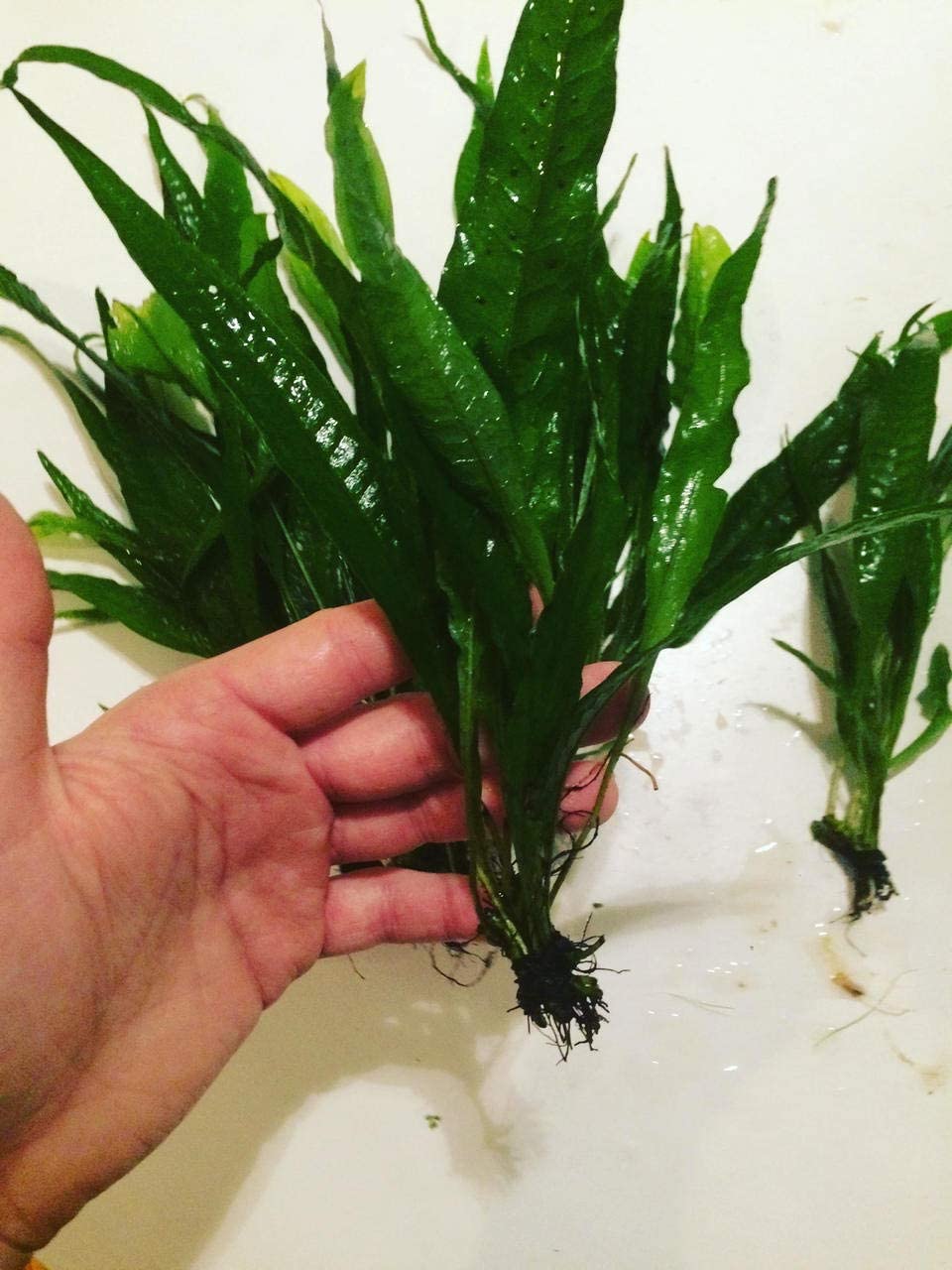
Java Fern Bare Root Microsorum Pteropus Low Light Freshwater Aquarium Plant
Best For Low Light Freshwater Aquariums As It Is Easy To Care For And Can Thrive In Dimly-Lit Conditions
Why We Love It:
Java Fern Bare Root (Microsorum Pteropus) is perfect for low light freshwater aquariums. This hardy and low maintenance plant can thrive in dimly-lit conditions, and it can improve the overall appearance of the tank. Its lush green leaves provide a natural hiding place and spawning site for fish, and its roots help to keep the water quality healthy. Plus, it can be attached to rocks, driftwood, or other surfaces using fishing line or thread until the roots take hold.
What You Should Know:
Java Fern can grow slowly, so regular pruning may not be needed. It can also be propagated by dividing the rhizome into smaller sections, each with at least one leaf and one root. When planting Java Fern, use tweezers to separate the roots from the substrate and plant it in the center of the substrate. Keep in mind that this plant requires little maintenance and can be a great addition to any freshwater aquarium. So why wait? Get your own Java Fern Bare Root today!
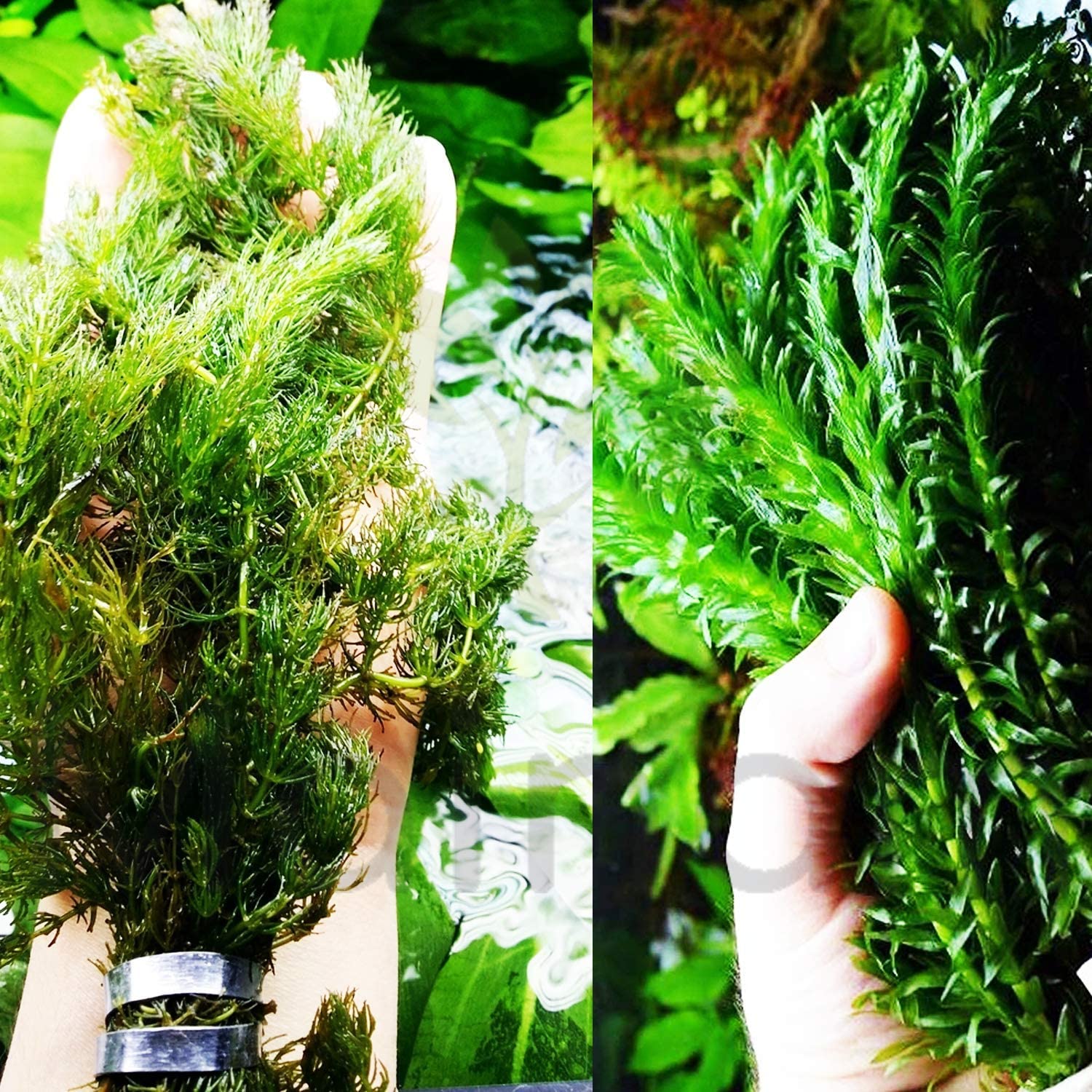
Mainam 1 Hornwort Bunch And 3 Anacharis Freshcut for Pond Live Aquarium Plant Tropical Oxygenating
Best For Tropical Pond Setups As They Are Live Aquarium Plants That Effectively Oxygenate The Water
Why We Love It:
Mainam 1 Hornwort Bunch + 3 Anacharis Freshcut are great options for anyone looking to add some live plants to their tropical pond setup. Not only do these plants provide a more natural look to the pond or aquarium, but they are also known for their ability to produce oxygen, making them a popular choice among fish keepers. Plus, both Hornwort and Anacharis are relatively easy to maintain, making them a great option for both experienced and novice fish keepers.
What You Should Know:
When it comes to taking care of Hornwort and Anacharis, they prefer a tropical water temperature of 72-82°F (22-28°C) and a pH of 6.0-7.5. They also require moderate lighting, but Hornwort is more tolerant of low light conditions than Anacharis. If you want to increase your stock of Hornwort and Anacharis, they can be propagated by cutting them and planting the cuttings in the substrate. Hornwort can also propagate by sending out runners. So why wait? Get your Mainam 1 Hornwort Bunch + 3 Anacharis Freshcut today and start enjoying the benefits of live plants in your tropical pond setup!
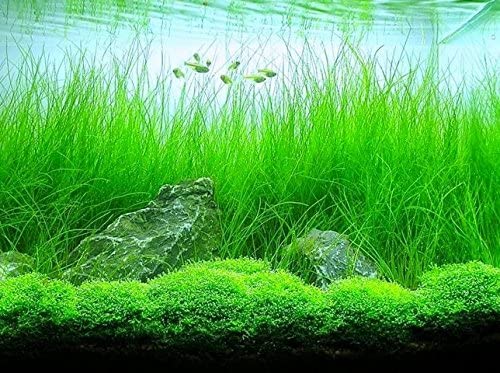
AQUARIUM PLANTS DISCOUNTS Potted Tall Hairgrass by AquaLeaf Aquatics
Best For Providing A Natural Look And Being Easy To Maintain In Aquariums
Why We Love It:
Aquarium plants can be the perfect way to make your aquarium look natural and beautiful. Discounts on potted tall hairgrass by AquaLeaf Aquatics make it even more affordable for hobbyists to create the perfect aquarium environment. This attractive and versatile plant can be used to create a natural foreground in your tank. Plus, it's easy to maintain and requires minimal upkeep.
What Else Should People Know:
When shopping for aquarium plants, it's important to research the specific care requirements for the potted tall hairgrass before purchasing. Proper lighting, fertilization, and water parameters are all important for it to thrive. Additionally, make sure to inspect the plants for pests and diseases before adding them to your aquarium. With the right care and attention, your potted tall hairgrass from AquaLeaf Aquatics can be the perfect addition to your aquarium!
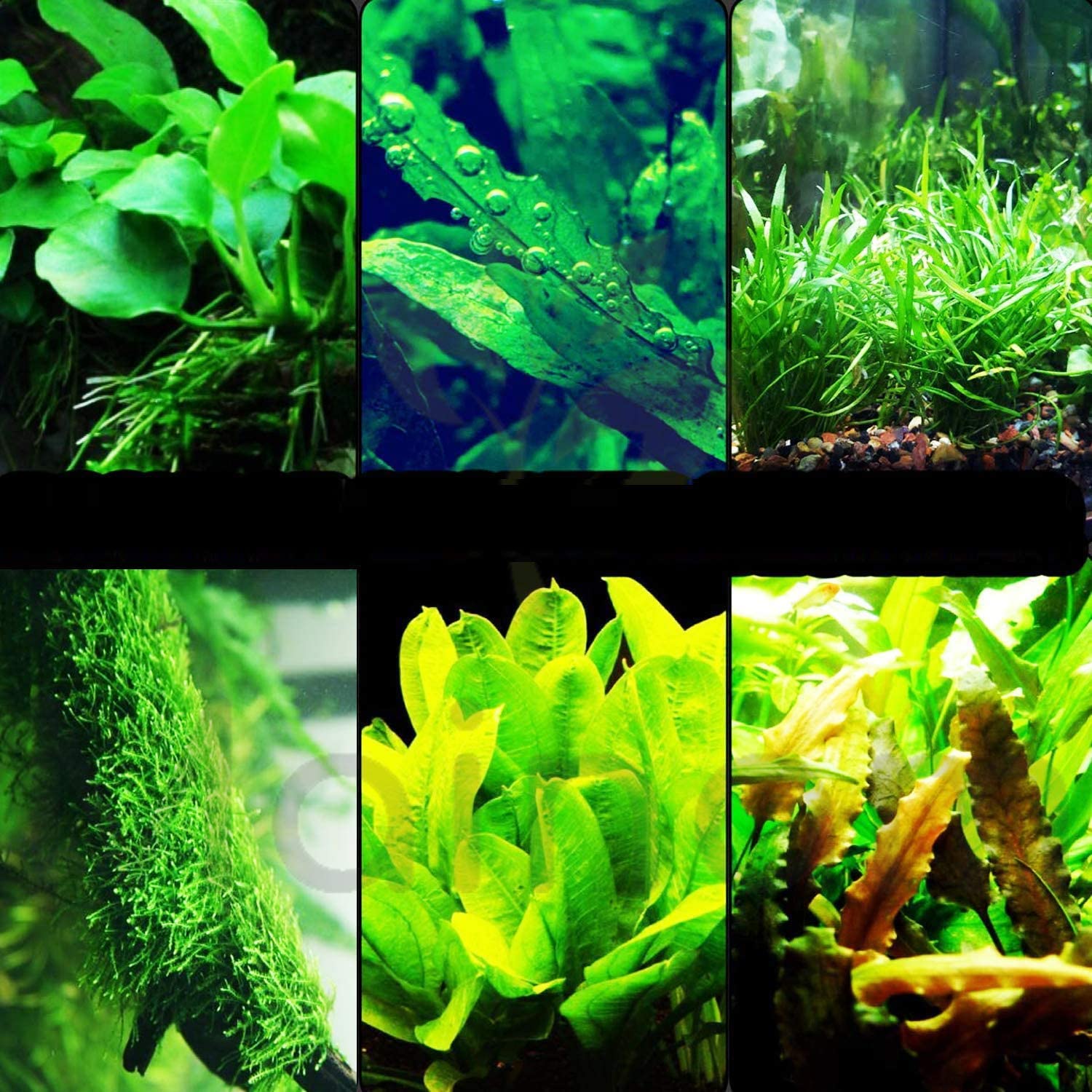
30+ Stems Package Starter Beginner Set Live Aquarium Plants
Provides A Diverse Selection Of Plants For A Well-Balanced Ecosystem.
Why We Love It:
The 30+ Stems Package Starter Beginner Set Live Aquarium Plants is perfect for anyone who wants to start an aquarium with live plants. This package provides a diverse selection of plants that can help to create a well-balanced ecosystem in the aquarium. Not only does it provide a great selection of plants, but it's also cost-effective and more visually interesting than artificial plants. Plus, it can be more enriching for your fish since live plants provide oxygen to the tank.
What You Should Know:
Before adding the plants to your aquarium, research the specific care requirements for each plant so you can be sure you have the proper equipment and conditions to care for them. Additionally, it's important to quarantine the plants before adding them to your aquarium to ensure they are free of pests and diseases. With proper care and maintenance, these live plants can thrive and create a beautiful and enriching environment for your fish. So why wait? Get your own 30+ Stems Package Starter Beginner Set Live Aquarium Plants today!
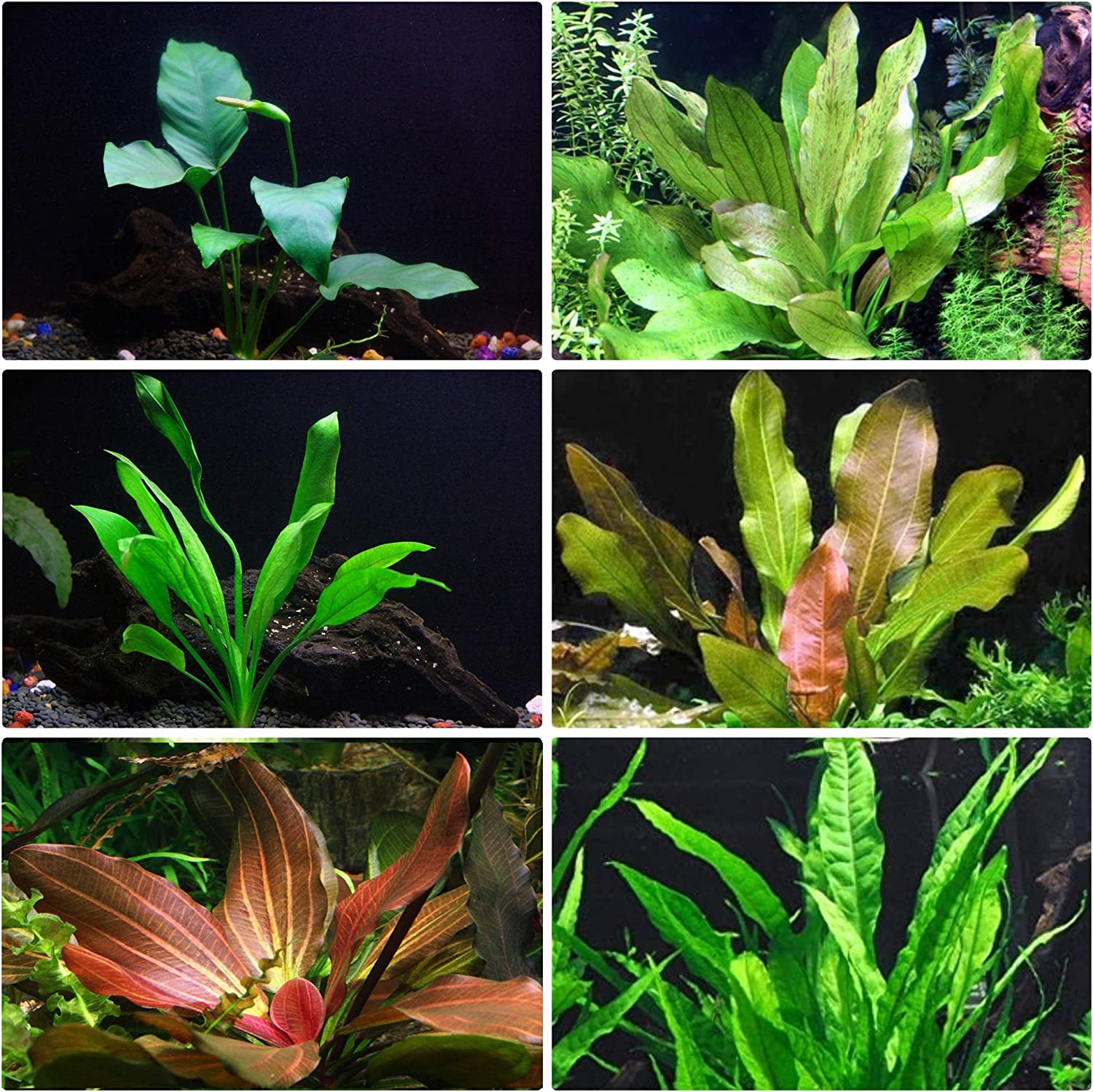
Rooted Live Aquarium Plant Bundle
Best For Providing An Established, Healthy And Visually Appealing Aquatic Environment In The Aquarium
Why We Love It:
Rooted live plants are the perfect way to bring natural beauty and tranquility into your aquarium. Not only do they provide a stunning visual effect, but they also help to improve water quality, reduce stress, and provide a healthy environment for fish and other aquatic life.
What You Should Know:
When adding rooted plants to your aquarium, it's important to take the proper steps to ensure their success. Quarantine new plants before adding them to an established tank to prevent the introduction of pests or diseases, and make sure they are getting the right amount of light, fertilization, and pruning. Additionally, some plants can grow quite large, so make sure your tank is big enough to accommodate their growth. With the right care, rooted live plants can be a beautiful addition to any aquarium!
Best Aquarium Plants for Oxygenation FAQs
Are you looking for the best aquarium plants to oxygenate your tank? With so many different types of aquarium plants, it can be hard to know which ones will provide the best oxygenation for your tank.
We've compiled a list of the 12 best aquarium plants for oxygenation so you can make sure your tank is getting the oxygen it needs. Our list includes the most popular aquarium plants and their specific benefits, so you can make an informed decision about the best plants for your tank.
What aquarium plants produce the most oxygen?
Some of the best aquarium plants for oxygen production include Anacharis, Hornwort, Java Fern, Water Sprite, and Amazon Sword. These plants are all fast-growing and can produce a lot of oxygen for your aquarium. They are also easy to care for and can be grown in a variety of water conditions.
Do plants increase oxygen in aquarium?
Yes, plants can increase oxygen levels in an aquarium. Plants produce oxygen as a byproduct of photosynthesis, and this oxygen is released into the water. In addition, plants also absorb carbon dioxide from the water, which further increases oxygen levels in the aquarium. Having plants in an aquarium also helps to create a more balanced and stable environment for fish and other aquatic life.
Do plants help oxygenate water?
Yes, plants can help oxygenate water. Plants produce oxygen as a byproduct of photosynthesis, and they also release oxygen into the water. This process helps to oxygenate the water, which is necessary for the survival of aquatic life. Additionally, aquatic plants can provide shelter and food for fish, which can help to maintain a healthy aquatic ecosystem.
How many plants do you need to increase oxygen?
The amount of plants needed to increase oxygen in your home or office depends on the size of the space you're trying to oxygenate. Generally speaking, you need at least one plant per 100 square feet of space to make a noticeable difference in oxygen levels. Adding more plants will increase the oxygen levels even more, but it's important to remember that plants also need light and water to stay healthy and produce oxygen.
Does more oxygen make plants grow faster?
Yes, increasing the amount of oxygen in the air around a plant can help it grow faster. Plants use oxygen for respiration, and the more oxygen available, the more efficiently the plant can use it to produce energy. This energy is then used for growth and development. Additionally, oxygen helps to reduce stress on the plant, which can also help it grow faster.
How do you increase oxygen in plants?
The best way to increase oxygen levels in plants is to increase the amount of light they receive. Plants use light energy to produce oxygen through photosynthesis. Additionally, proper soil aeration and good drainage can help increase oxygen levels in the soil, which will in turn be absorbed by the plants. Another way to increase oxygen levels is to use oxygenating fertilizers, which release oxygen into the soil. Finally, planting aquatic plants in ponds and water gardens can help increase oxygen levels in the water.
What is best way to oxygenate aquarium?
The best way to oxygenate an aquarium is to use an air pump and airstone. An air pump pumps air into the aquarium, which then passes through the airstone and breaks the air into tiny bubbles. These bubbles release oxygen into the water, allowing the fish to breathe. Additionally, a filter can be used to help keep the water clean and free of debris, which can also help oxygenate the aquarium.
What is the main source of oxygen in plants?
The main source of oxygen in plants is photosynthesis. During photosynthesis, plants take in carbon dioxide from the atmosphere and use light energy from the sun to convert it into oxygen and glucose. The oxygen is then released into the atmosphere, while the glucose is used by the plant as an energy source.
Do aquarium plants consume oxygen at night?
Yes, aquarium plants do consume oxygen at night, but not as much as during the day. During the day, photosynthesis is taking place and oxygen is being produced, but at night, the process reverses and oxygen is consumed. This is why it's important to have adequate aeration in the aquarium, to ensure that oxygen levels don't drop too low during the night. Additionally, having some fish in the tank will help to keep oxygen levels up, as they produce oxygen as a byproduct of respiration.
What plant produces oxygen the fastest?
The plant that produces oxygen the fastest is the common duckweed (Lemna minor). Duckweed is a floating aquatic plant that can double its biomass in as little as 24 hours, and it produces oxygen through photosynthesis. It is also one of the fastest growing plants in the world, and can produce up to 9 times more oxygen than other aquatic plants.
How many hours of darkness do aquarium plants need?
Aquarium plants need 10 to 12 hours of darkness each day in order to thrive. This is because plants use photosynthesis to convert light energy into food and during the dark period, they use the food stored up from the light period to survive. If there is too little darkness, the plants won't be able to store enough energy and will become weak and unhealthy.
Do aquarium plants affect pH?
Yes, aquarium plants can affect the pH of your aquarium water. Plants absorb carbon dioxide and release oxygen, which can increase the pH of the aquarium water. They also release organic acids and carbonates, which can lower the pH of your aquarium water. Therefore, it is important to monitor the pH of your aquarium water regularly and adjust it as needed.
When it comes to oxygenating your aquarium, the right plants are essential. After reviewing 12 of the best aquarium plants for oxygenation, we've come to the conclusion that there are several great options available. Whether you're looking for something low-maintenance or something that can add a pop of color to your aquarium, there's something for everyone.
From water wisteria to hornwort, these plants are sure to give your aquarium the oxygenation it needs while also adding a unique aesthetic. Plus, they're easy to care for and provide plenty of benefits for the fish in your tank. So, don't wait any longer and get your hands on one of these oxygenation-friendly plants today!

